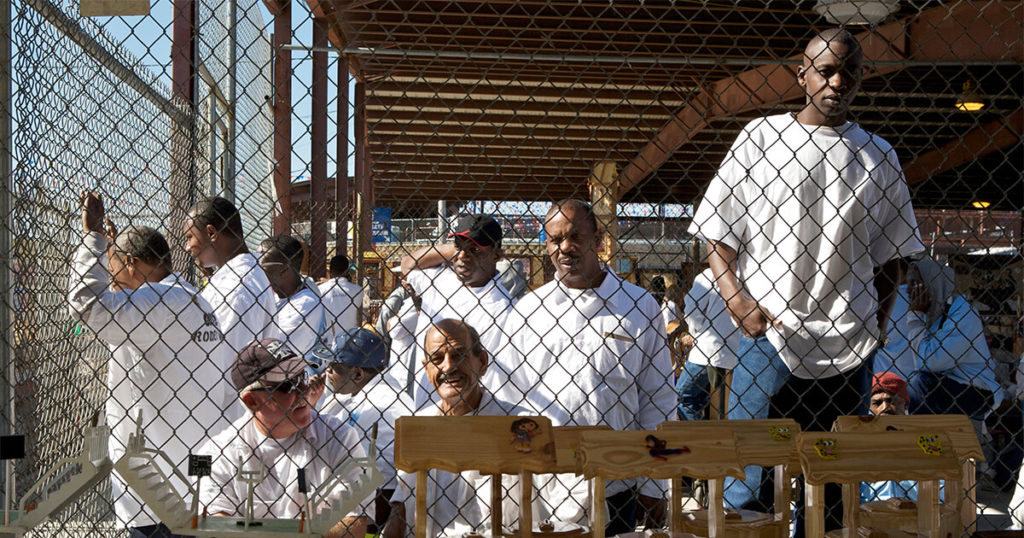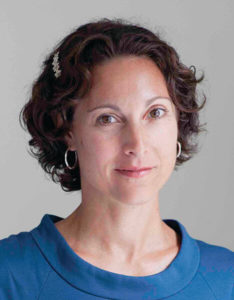
 Emily Bazelon is a staff writer at The New York Times Magazine and the author of Charged: The New Movement to Transform American Prosecution and End Mass Incarceration, which follows the stories of two young people accused of serious crimes in Memphis and Brooklyn. She is also the Truman Capote Fellow for Creative Writing and Law at Yale Law School. We asked her to pose four questions about the future of criminal justice reform.
Emily Bazelon is a staff writer at The New York Times Magazine and the author of Charged: The New Movement to Transform American Prosecution and End Mass Incarceration, which follows the stories of two young people accused of serious crimes in Memphis and Brooklyn. She is also the Truman Capote Fellow for Creative Writing and Law at Yale Law School. We asked her to pose four questions about the future of criminal justice reform.
1. The number of people incarcerated in the United States has quintupled since the 1980s, to almost 2.2 million. We used to incarcerate people at roughly the same rate as Scandinavia. That region’s rate has held steady, but we now have 5 percent of the world’s population and nearly 25 percent of its prison population. Recent polls suggest that the public is turning against this huge punishment machine. In a 2017 survey for the ACLU, 71 percent of respondents—including 52 percent who were Trump voters—said it’s important to reduce the prison population. Although the number of men and women locked up has declined slightly in the past decade, the nonprofit Sentencing Project estimates that at the current pace of decarceration, it will take 75 years just to cut the prison population in half. Will the movement to reform the criminal justice system—and in particular to elect progressive prosecutors—succeed in doing much more, faster, to end mass incarceration? Research suggests that the numbers could fall by half or even far more without significantly increasing crime.
2. More than four million people in the United States are under some kind of court-ordered supervision, such as parole or probation. Supervision originated to serve the goal of reintegration—to help people released from prison improve their lives so that they could be more productive citizens. But that goal has fallen out of favor. Many parole and probation officers have huge caseloads, and their main task is to monitor people, not help them. It’s a model that lands many people back in jail or prison for violating a technical condition of parole, like curfew. In Pennsylvania, for example, a third of the incarcerated population is being held on parole or probation violations. How can reformers and policymakers give priority to social work services, like helping people find affordable housing, get jobs, or prepare for GED tests and community college classes?
3. To date, the movement to reduce mass incarceration and increase fairness in sentencing has gained the most traction in large metropolitan areas. As Jessica Pishko writes in The Atlantic, “[S]ince 2008, urban jail populations have shrunk dramatically, while rural ones continue to rise; the highest incarceration rates are now in rural counties, whereas 20 years ago, they were in urban ones.” The opioid crisis has hit economically distressed places particularly hard, and these drugs are prescribed more often in rural areas. Public health services, like drug treatment and family support, are better tools for solving this crisis than courtrooms or jails. Will rural prosecutors and judges continue to crack down on people who use drugs, or will criminal justice reform reach these parts of the country, too?
4. Over the past 25 years, violent crime in the United States has fallen sharply. So has property crime. But for the most part, the American punishment machine has continued to pump at nearly the same rate that it did when crime was at its height in the 1980s and ’90s. To the extent that cities across the country have begun to move away from this outdated approach (for example, by electing progressive candidates for district attorney), they’ve taken advantage of the declining crime rate. In New York City, the country’s biggest success story in this regard, crime has fallen to a low not seen since the 1950s. But what happens if New York and other cities experience an uptick? If crime rises, is reform doomed—and how can the criminal justice reform movement make sure that doesn’t happen?

